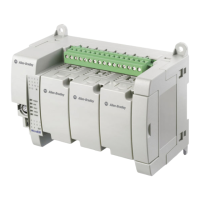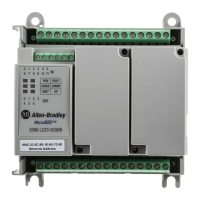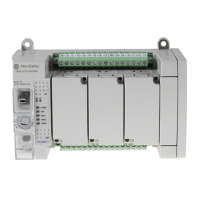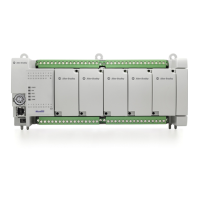Rockwell Automation Publication 2080-UM002G-EN-E - March 2015 69
Motion Control Chapter 7
To use the Micro800 motion feature, you need to:
1. Configure the Axis Properties
See Motion Axis Configuration in Connected Components Workbench
on page 95 for instructions.
2. Write your motion program through the Connected Components
Workbench software
For instructions on how to use the Micro800 motion control feature, see
the quickstart instructions, Use the Motion Control Feature on Micro800
Controllers, publication 2080-QS001
.
3. Wire the Controller
a. refer to Input and Output Signals
on page 70 for fixed and configurable
inputs/outputs
b. See Sample Motion Wiring Configuration on
2080-LC30-xxQVB/2080-LC50-xxQVB on page 72 for reference
The next sections provide a more detailed description of the motion components.
You can also refer to the Connected Components Workbench Online Help for
more information about each motion function block and their variable inputs
and outputs.
Axis From a system point of view, an axis
is a mechanical apparatus that is
driven by a motor and drive
combination. The drive receives
position commands through the
Micro800 pulse train outputs
interface based upon the PLC
execution of motion function blocks.
On the Micro800 controller, it is a
pulse train output and a set of
inputs, outputs, and configuration.
• Motion Axis and Parameters
on page 83
• Motion Axis Configuration in
Connected Components
Workbench on page 95
Motion Function Blocks A set of instructions that configure
or act upon an axis of motion.
• Connected Components
Workbench Online Help
• Motion Control Function
Blocks on page 73
• Axis_Ref Data Type on
page 90
• Function Block and Axis
Status Error Codes on page 92
• Homing Function Block on
page 108
Jerk Rate of change of acceleration. The
Jerk component is mainly of
interest at the start and end of
motion. Too high of a Jerk may
induce vibrations.
• See Acceleration,
Deceleration, and Jerk Inputs
on page 75.
Components of Motion Control

